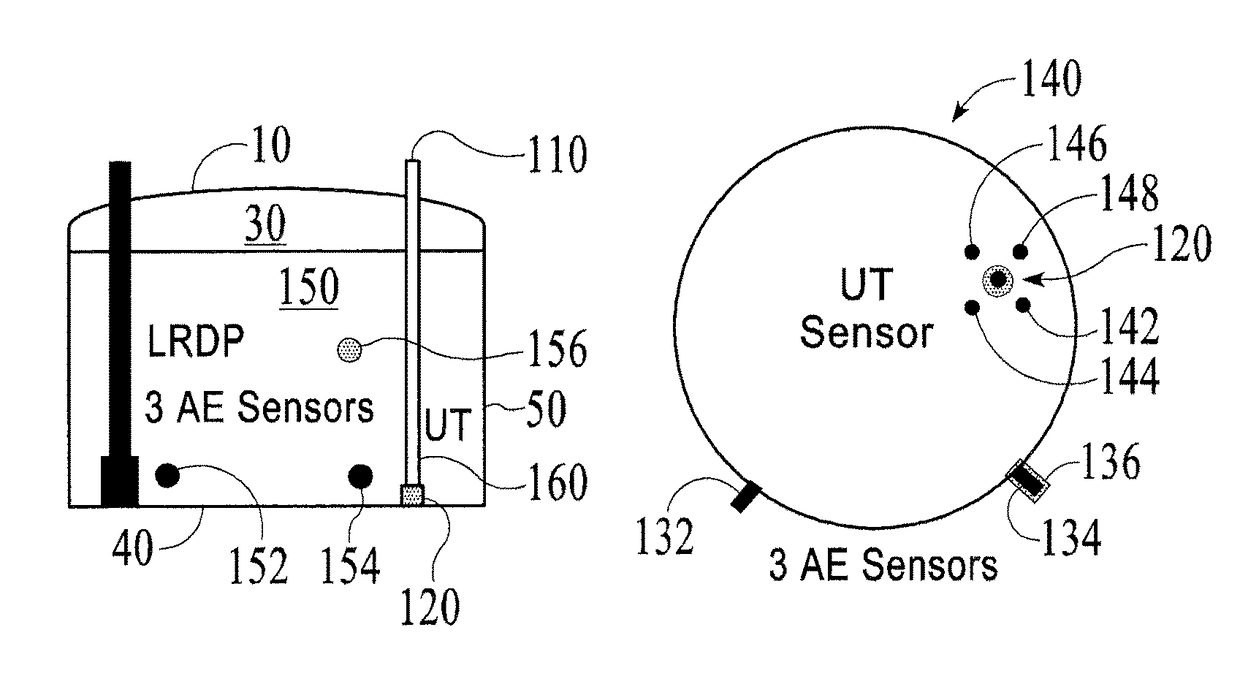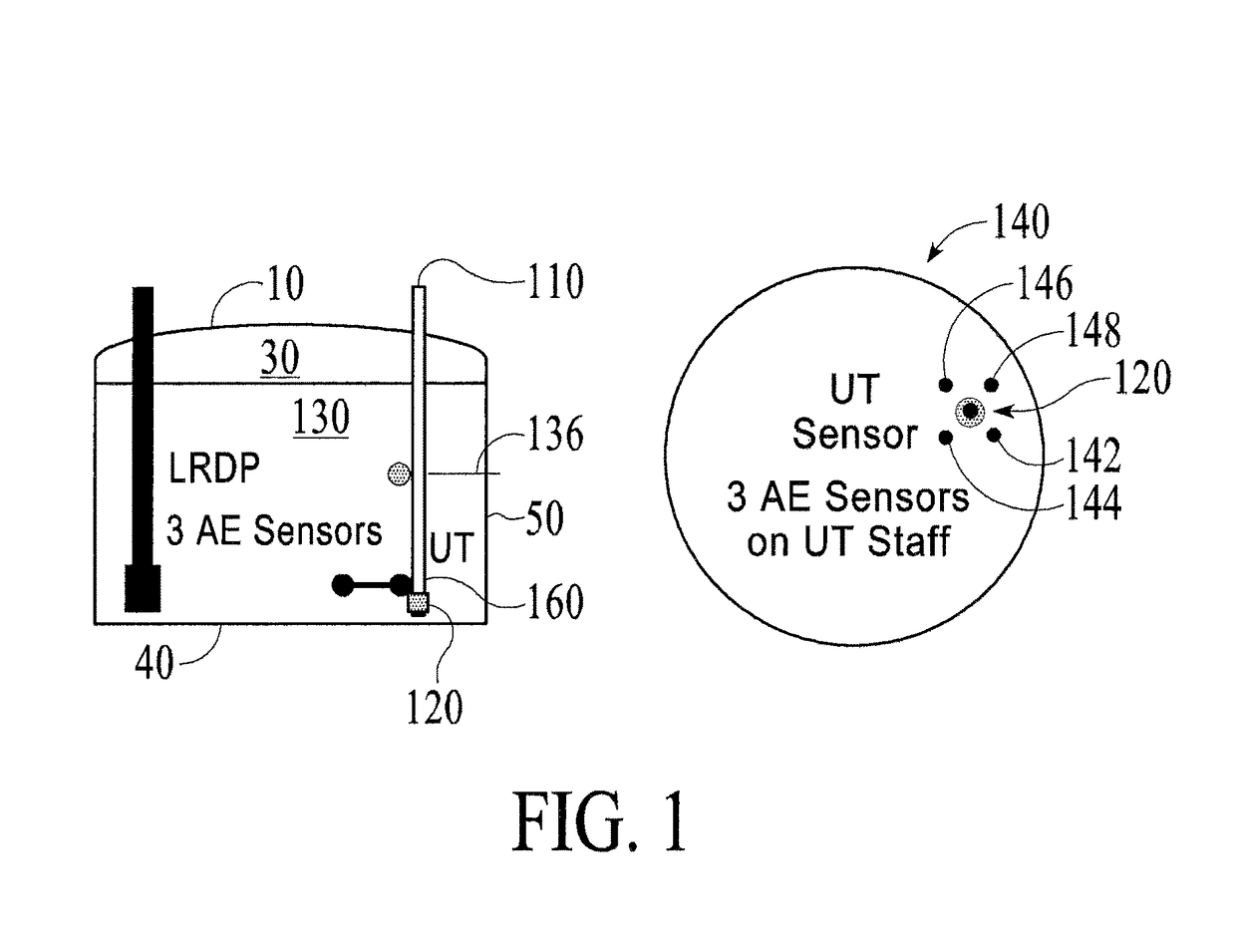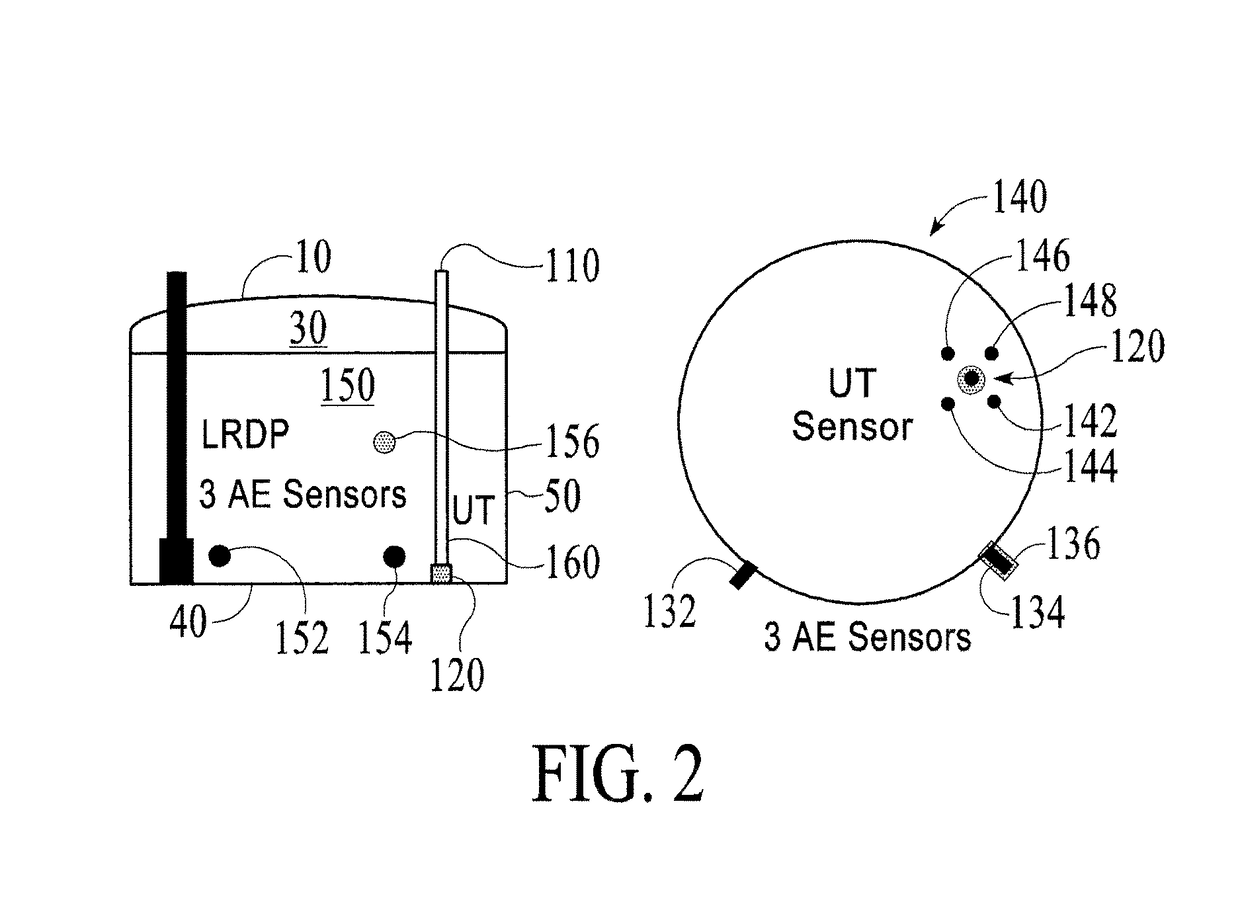Method and apparatus for in-service measurement of the bottom thickness and corrosion rate of a tank bottom
a tank bottom and bottom thickness technology, applied in the direction of instruments, analysing solids using sonic/ultrasonic/infrasonic waves, and fluid detection at leakage points, can solve the problems of inability to see, less than optimal maintenance and repair, and high cost of out-of-service inspection, so as to achieve the effect of safe determination of the level of corrosion
- Summary
- Abstract
- Description
- Claims
- Application Information
AI Technical Summary
Benefits of technology
Problems solved by technology
Method used
Image
Examples
Embodiment Construction
[0048]A method and apparatuses is described to make an in-service measurement of the thickness and corrosion rate of the floor an AST or a bulk UST. This method and the apparatuses are used in conjunction with a leak detection system to determine the time interval between or to the next out-of-service internal inspection of the tank bottom or floor. The preferred embodiment uses a local measurement of the thickness and corrosion rate at one or a few locations in the tank and the results of an AE corrosion activity test showing little or no active corrosion activity together to extend the local measurements of the bottom or floor thickness to the entire tank bottom or floor. Alternatively, a previous out-of-service internal inspection of the tank floor can be used in place of or combined with the AE corrosion activity test to extend the local measurements of floor thickness and corrosion rate to the entire tank floor. The preferred embodiment of the method is to combine and insert th...
PUM
| Property | Measurement | Unit |
|---|---|---|
| time | aaaaa | aaaaa |
| time | aaaaa | aaaaa |
| frequency response | aaaaa | aaaaa |
Abstract
Description
Claims
Application Information
 Login to View More
Login to View More - R&D
- Intellectual Property
- Life Sciences
- Materials
- Tech Scout
- Unparalleled Data Quality
- Higher Quality Content
- 60% Fewer Hallucinations
Browse by: Latest US Patents, China's latest patents, Technical Efficacy Thesaurus, Application Domain, Technology Topic, Popular Technical Reports.
© 2025 PatSnap. All rights reserved.Legal|Privacy policy|Modern Slavery Act Transparency Statement|Sitemap|About US| Contact US: help@patsnap.com



